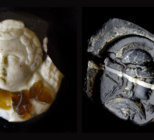A legal challenge is to be brought to the British Museum for its uncredited use of translations in its exhibition material.
Chinese Canadian writer, poet, and translator Yilin Wang’s translations of Qiu Jin’s poetry were used by the Museum for its ‘China’s hidden century’ exhibition without permissions or acknowledgement.
Wang first brought the issue to Twitter last month, in a post that now has more than 14,000 retweets.
Um, hey @britishmuseum, it's come to my attention that your exhibit "China's hidden century" uses my translations of Qiu Jin's poetry, but you never contacted me for permission. Please note this is a copyright infringement! How are you going to fix this?? #NameTheTranslator pic.twitter.com/yvbkvdVaSY
— Yilin (she/they) @ "STOLEN BY THE BRITISH MUSEUM" (@yilinwriter) June 18, 2023
In response, the British Museum said credit for the translations had been “inadvertently omitted from [its] exhibition” due to “unintentional human error for which the Museum has apologised”.
The Museum said it “make[s] every effort to contact the owners of rights in text, images, print and digital media. This was a particularly complicated project and we recognise we made an inadvertent mistake and fell short of our usual standards.”
It has since taken down the translations in the exhibition, and said it had offered financial payment for the period the translations appeared in the exhibition, as well as for the continued use of quotations from the translations in the exhibition catalogue, which now includes an acknowledgement of the work.
Wang claims the British Museum used the translations in multiple formats including a projection, on a sign, in digital and print audio guides, in an audio form and its transcript, and in an audio guide in its app.
A crowdfunding page has since been set up by Wang to fund legal action for use of the translations, which has surpassed its £15,000 goal, a target which has since been increased to £20,000.
The crowdfunding page states that the £15,000 already committed will allow Wang to be represented in the case by Jon Sharples at London law firm Howard Kennedy.
Sharples is quoted on the crowdfunding page, writing: “…I will be working with Yilin and her barrister to draft her legal claim against the British Museum, working with a team of specialist lawyers who are experienced in intellectual property and moral rights claims in the art and cultural property context.”










